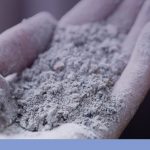
What to Do with the Property of a Deceased Person
The death of a loved one is a difficult experience to go through. The deceased person’s family and friends often find themselves involuntarily managing the many steps relating to the departure of their loved one, in addition to having to deal with their grief. Crématorium Montréal explains what to do with the deceased’s belongings, to help you navigate this rather unfamiliar situation.
The estate
In legal jargon, all the property owned by a person at the time of death is called the “estate”. The estate can be accepted or refused, and the heirs generally have six months to make their decision. The property in the estate must then be “liquidated” in accordance with the wishes of the deceased, or in accordance with the law, if the will doesn’t mention it. Usually, the name of the designated liquidator of the estate is included in the will. This person is responsible for ensuring the proper management of the deceased’s belongings to be liquidated in the heirs’ interest.
The inventory
In order to know the extent of the estate, it is essential to make an inventory, as required by law. This inventory will provide a realistic picture of the deceased’s assets and debts. The inventory includes immovable property (the official designation of properties with their respective values), cars, collections of various objects, antique furniture, etc. It also includes bank accounts, stocks, bonds, debts and other similar securities with the value of each one. In addition, it is important to list assets and liabilities and to publish a Notice of closure of the inventory in the Registre des droits personnels et réels mobiliers (RDPRM) (the register of personal and movable real rights), once everything is established.
To help you, it is recommended that you call on the services of specialists to assess the value of the belongings (assets). Take note that without an inventory, the heirs are responsible for the deceased’s debts.
What to do with personal household belongings
Often indicated in the will or discussed with the family beforehand, personal belongings of sentimental value are often divided among the heirs, according to the wishes of the deceased. Since items worth less than $100 are not included in the inventory, it is up to the family to keep or dispose of them. Souvenirs, framed photos, photo albums, jewelry, clothing, stationery, furniture, dishes, etc. are all items that may have great sentimental value, so it is important to respect the wishes of the deceased.
If no mention is made and you find yourself with a lot of possessions to dispose of, consider helping others by donating them to non-profit organizations. They will then give items such as clothing or small appliances to people or families in need. Here is a complete list of organizations that collect donations by type of item in the Greater Montreal area:
Otherwise, the Fondation la collecte, Le Support or Entraide diabétique du Québec, to name a few, are all organizations that collect your items in good condition to fund important causes in Quebec! Another great way to give back to the community…
In short, it is true that the departure of a loved one brings great upheaval, pain and a considerable amount of work to understand all the steps and liquidate the estate. For more details on what to do after the death of a loved one, contact a Crématorium Montréal advisor, who will be able to direct you to the right resources to help you get through this ordeal more serenely.




